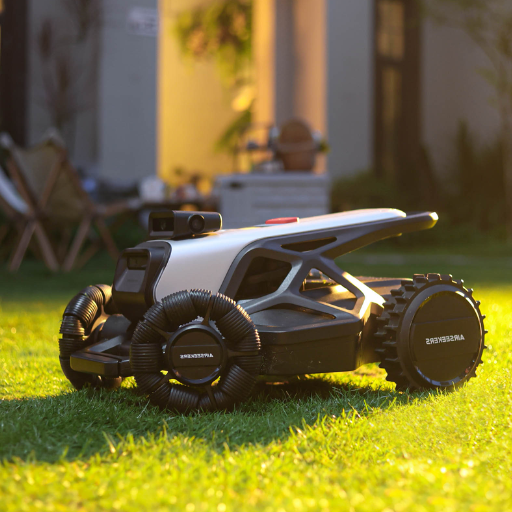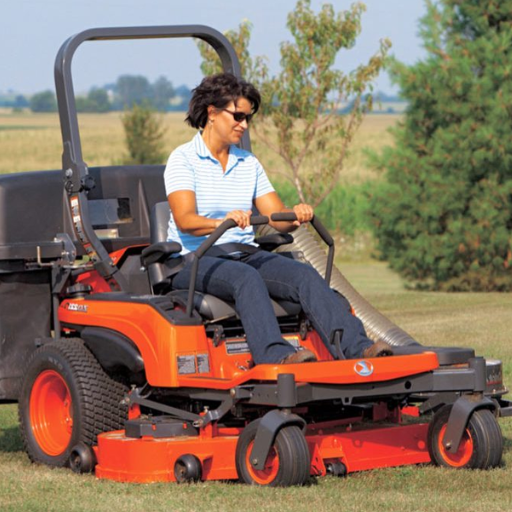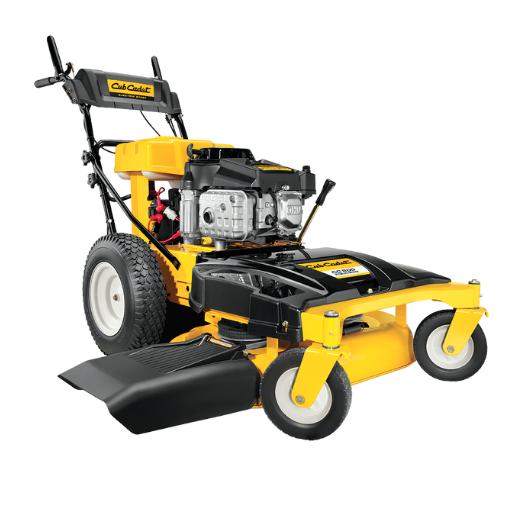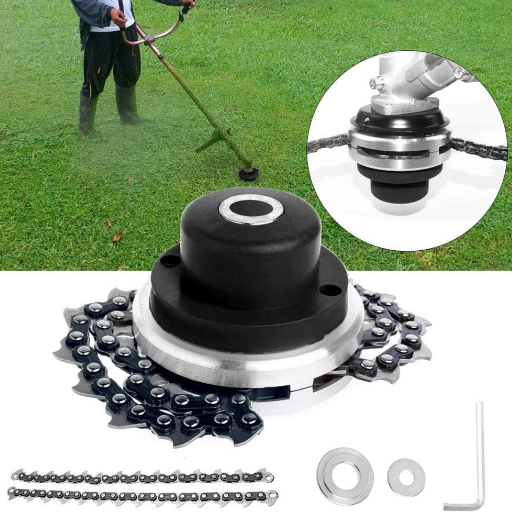Get ready to get inspired! The following pages will help you learn how to use free-motion machine embroidery; it’s the most accessible and creative embroidery style and ideal for origami design or other styles. This is a welcome guide for trainees and professionals because it will give you the necessary skills and knowledge to master this art. We will cover the skills and knowledge that will be the foundations for your design work, such as basic materials selection, machine settings, and understanding stitches. We will continue teasing out advanced work and techniques to address design issues as you develop. Do you want to accentuate clothing designs, or do you want to make embroidery pieces as art? Whatever the case, this guide is here to help people like you achieve your artistic goals and allow your work to radiate your individuality. Be with us as we work through the ten best design possibilities for this type of embroidery.
How to Set Up Your Embroidery Sewing Machine for Success?

Step 1: Gather Your Tools and Materials
Begin by ensuring you have all the necessary tools and materials ready. This includes the embroidery sewing machine, embroidery thread, a suitable needle for your fabric, a stabilizer, and the fabric you plan to work on.
Step 2: Select the Appropriate Needle and Thread
Select a needle that matches the weight and type of your fabric; a universal needle often works well for most projects. Pair it with high-quality embroidery thread that won’t easily break during stitching.
Step 3: Prepare Your Machine
Set up your embroidery sewing machine by switching it on and inserting the needle and bobbin. Ensure the needle is tightly secured and the bobbin is wound correctly and appropriately placed in its case.
Step 4: Attach the Embroidery Foot
Attach an appropriate free-motion embroidery foot to your machine. This foot gives you better control and visibility while stitching, allowing you to create intricate designs.
Step 5: Adjust the Tension and Stitch Settings
Adjust the thread tension to match the thread type and fabric. For free-motion embroidery, lower the feed dogs (which control fabric movement) to maneuver the fabric freely as you stitch.
Step 6: Test on a Scrap Fabric
Before you start on your final piece, test the setup on scrap fabric. This allows you to adjust settings like tension or stitch length to achieve the perfect result.
What Needle and Thread Should You Use?
Choosing the appropriate needle and thread is a significant factor in the successful conclusions of any embroidery assignment. Nonetheless, on most textiles, a size 75/11 or an 80/12 universal needle works fine; delicate textiles may expose the need for smaller needles, while constructing large and taut materials may require larger ones. Monetarily, embroidery thread is suitable for polyester thread or rayon thread as it is strong and enhances the beauty of a thread design. I am sure that breakages do not happen due to utilizing the thread appropriate for the fabric type. However, the hypothesis remains that a needle, thread, and fabric do not do the embroidery in isolation but in combination. As such, it would not be prudent not to try out various ratios on scrap pieces of fabric. It would render exactness of time and quality on the end piece of work.
How to Check Your Sewing Machine Before Starting?
First things first, before putting the machine to use, the sewing machine should be cleaned. Brush or vacuum around the dust, lint, and the areas of the machine, mostly bobbin and needle plate. Then, lightly oil the machine as indicated in the manual, which means applying a few drops to the parts of the machine that move to reduce wear and tear. Always ensure the stitch is intact and suitable for the work; it should be replaced if bent or blunt, as this would affect the stitch quality. Everything, including the stitch length and width, should be set according to the fabric type used. Then, turn on the sewing machine and sew a few stitches on a scrap piece of fabric to ensure all functions are working usually. By taking these actions, a slew of issues in one’s embroidery practice is avoided by achieving the emblems’ operating economy and professional quality.
Why Is Sewing Machine Tension Important?
The importance of sewing machine tension cannot be overemphasized because it helps balance the stitches using the right amount of thread. The tension prevents thread loops, puckering, and uneven stitches, which lowers the quality of embroidery work. Most of the time, dials or buttons are used to adjust the sewing machine tension. When working with most types of fabrics, a tension setting that should be observed generally ranges from a minimum of 4 to a maximum of 6, and it also depends on the machine and fabric type. If light fabrics are being used, it may be advisable to use a lighter tension setting; for heavy fabrics, a tighter, higher tension setting may be used. The tension is varied and is carefully adjusted so that the stitches fix the fabric satisfactorily without damaging the fabric. It is suggested that various types of tension be used to set stitches on ‘scrap’ fabric to check which tension you would like to use for that particular project.
What Are Essential Free Motion Embroidery Techniques?

Free motion embroidery has a lot of options and creative possibilities in the designs. To get started, allow yourself to master the key points of this technique first. Check whether you should use the proper presser foot, such as the darning or the free-motion foot, to let the fabric move as you sew. Use your machine settings to disengage feed dogs to move the fabric and form different shapes manually. Strive to keep the speed and hand motion consistent to achieve evenly spaced stitches. Determine the optimum threads and needle size combinations for the fabric and design. Using fabric stabilizers can help prevent puckering and stretching of the material during the stitching process. These skills will help you do clean and well-looking free-motion embroidery.
How to Drop the Feed Dogs?
Dropping the feed dogs is an essential aspect of free-motion embroidery or quilting, for it permits complete control over fabric movement. To drop the feed dogs, the first step is to refer to the sewing machine’s manual because the technique may vary from one model to another. Generally speaking, one can look for a button or a lever that can deactivate the feed dog by projecting it below the needle area of the machine. On some machines, this may mean taking off the accessory tray to get to the lever or other parts of the machine. However, if no manual drop option exists, use the darning plate for the same purpose. After dropping the feed dogs, check that they are lowered adequately by ensuring that no part of the fabric is clamped and can be moved around easily and without force. This setup enables the free-motion embroidery of intricate shapes with ease.
What Is the Role of the Free Motion Foot?
Free-motion foot (or darning foot) is essential in free-motion embroidery and quilting since it enables the fabric to move freely in any direction. Quite a few motions can be made with this low-height presser that does not rest firmly against the cloth, so the feed dogs do not force the sewing fabric downwards as you sew. Free motion foot, often available in most sewing machines, usually has some scant pressure and height for optimum movement relative to the thickness of the sewing material. Another advantage of this foot is its openness and form, which enhances the pillar’s visibility and movement around the pillar to enable sound and precise needlework. Selecting the right free-motion foot, designed to fit the sewing machine model for better seam clarity, is essential.
How to Use Free Motion to Create Textures?
When free-motion embroidery is used to create textures, fabrics must first be prepared by housing support material to prevent puckering and distorting when stitching the design. Lower the feed dogs as described before and place the suitable free-motion foot on the sewing machine. Choose stitch length 0, which enables normal movement of the fabric to be the determining factor of stitch size controlled manually.
Moving the fabric under the needle while following the created textured stitch patterns, such as stippling, meandering, or echoing, should be done carefully and smoothly. Start free motion sewing slowly, keeping the design loose while varying the speed and direction stitched for different effects and textures. The pressure of the foot must be changed as required to ensure that the whole length of the fabric is evenly bathed. Application threads of various types and multicolored threads can be used to create texture and design, finishing the fabric visually and physically. Do not focus on the particulars when first attempting to perform this operation; closer to the final piece, practice on scrap material. Emphasize that this is artwork, so they can use any movements or designs to create the desired texture.
How to Choose the Right Stitch and Embroidery Thread?

In any sewing project, one must be keen on choosing the right stitch and the embroidery thread to achieve beautiful results. First, think about the kind of fabric and the kind of design you want to create. In terms of stitches, simple designs may only use straight or zigzag stitches, while more complicated designs may require more attention with satin or blanket stitches. For embroidery threads, choose them to match or differentiate from the fabric as per the desired effect. For soft finishes, threads with cotton will suffice, but threaded with rayon threads will work better where gloss is preferred. Before going for the final project, it is advisable to try out the proposed stitch and thread on a piece of scrap material to see how they will look and function during the actual project.
What Stitch Length Should You Set?
Choosing the right stitch length will affect your sewing project’s overall look and quality. Most of the time, the default length for most sewing projects is between 2.5 and 3.0 mm, which is moderate for most sewing seams. However, this is not always the case, as it depends on the type of fabric and how the end product is intended to look. On a lighter fabric, a stitch length of about 2.0 mm is advisable so as NOT to cause puckering, while a heavy fabric may have to be loosened up to about 3.5 to 4.0 mm to prevent the thread from breaking because of the thick fabric. These long distances are especially beneficial in decorative stitching as the design has a chance to be pronounced. Remember that all stitch lengths should first be in practice to scraps of your fabric before expecting these results to be accomplished through the project itself.
How to Prevent Pucker in Your Work?
Puckering may be annoying but should not cause panic since it is common in most sewing projects. To handle the puckering: the first step is to see if the tension of the threads is correct, as tightly drawn threads lead to puckering. Test the tension on the seams with test scraps until you have a flat seam that does not pucker. Needles come in different sizes; choose the right one for your fabric, whereby light fabrics require fine needles while heavy fabrics require thicker needles. Stitch length is just as important; for light fabrics, use 2.0 mm; for medium to heavy fabrics, use 3.5 mm. Also, lightweight or stretchy fabrics can be prevented from puckering by stabilizing them using interfacing or tissue paper. Finally, after the seams have been sewn, they need to be ironed to remove the wrinkles, which will help give a more professional seam. Adjust most of these techniques based on tests with fabric scraps; the results will be the best.
Why Is a Stabiliser Crucial for Free Motion Machine Embroidery?

While doing free-motion machine embroidery, it is crucial to use a stabilizer due to several important factors. It allows the fabric to be supported, which is necessary to keep the embroidery stitches even without distortions. If no stabilizer is used, the fabrics, incredibly light-weight and stretchable ones’ will tend to shift, wrinkle, or stretch, thus affecting the quality of the embroidery design. Such a shift in focus would pull the fabric and loosen the stitch as one would move around thick designs, making things a bit messier and inconsistent. Embroidering different designs, including complicated or not-so-detailed ones, becomes easy and professionally done using a stabilizer, increasing the embroidery’s effectiveness.
What Type of Stabiliser Works Best?
The type of your project’s stabilizer depends first and foremost on the material being embroidered and the particular embroidery. For most general embroidery work, tear-way stabilizers are pretty appropriate since they act as a second layer during stitching and can be removed without great effort after the job is done. However, cut-away stabilizers are used for stretchable or delicate materials as they provide permanent support and prevent distortion. Water-soluble stabilizers are ideally suited to sheer fabrics, which means that the vis content would become an issue since it would be seen, as they dissolve entirely following embroidery. It is expected to experiment using a small portion of the chosen stabilizing material with the selected fabric and the design to quit the look and achieve the desired result.
How to Properly Use an Embroidery Hoop?
To effectively use an embroidery hoop, make sure that you follow the steps provided below to keep your fabric ready and taut for stitching. First, it is prudent to take a sufficient hoop in height and width to enable free movement along the edges. Now, undo the outer loopy ring from the inner ring and remove it. Take the inner ring and place the fabric over it, making sure it is in the middle and that the fabric is not wrinkled. Then, place the outer and inner rings on the fabric, pressing gently and evenly until the fabric is firmly secured between both rings. Pull the fabric gently from the two sides to attain the desired tension on the fabric, but be careful not to distort the fabric weave. Take the screw now and twist it in the outer ring to tighten the fabric in position or make the necessary allowances. Place everything ready for embroidering, and check that the fabric is tight and has the tension of a drum.
How to Solve Common Problems in Free Machine Embroidery?

While making free machine embroidery and if you happen to have any of those common problems, reaching for simple solutions should be a quick response strategy. In case of thread breakage, ensure that appropriate embroidery threads are used and that the tension adjustments that lock the threads are also relevant. A new needle can help eliminate skipped stitches if it suits the specific fabric. When there are wrinkles, see if the textile and garment are hooped firmly enough to prevent excessive movement. Also, decreasing the machine’s stitch speeds may help avoid overexertion. In cases of design shift during sewing, check for proper alignment of the hoop and ensure the fabric has not been moved from its original position. Primary maintenance can also avoid Most problems, such as getting the bobbin area free of dust and requiring oiling parts.
What to Do When Your Machine Doesn’t Stitch Properly?
If you encounter problems with your machine’s stitching quality, check the following possibilities first: the machine’s cleanliness, threading, and whether you are using the right size and type of needle for the target fabric. If the sewing thread keeps breaking, the upper tension setting should be verified again, as should the bobbin placement. Moveable sewing parts will most likely have to undergo feed cleaning if the stitching appears to be uneven. Loose stitches are familiar with the sewing needle; thus, they should be replaced immediately if a needle is bent or worn. Do not forget to oil a sewing machine once every few days per specified guidelines from manufacturers, as this may stop other sewing complications. To address these problems, avoiding an amateur attitude and keeping routine repair cycles and quality materials while working is essential.
How to Adjust Machine Tension?
The machine’s tension is adjusted by checking both the upper thread tension and that of the bobbin. The upper thread tension is the one that is mainly controlled by a dial or from the digital screen of a sewing machine. For most sewing works, a dull mid-range setting is sufficient, usually around 4 or 5 on a range of 0 to 10, but this depends on the type and thickness. As for the adjustment of the bobbin’s tension, it should be done using a tiny screwdriver to rim the tension screw, which is, in the bobbin case, usually ‘tightens clockwise’ and ‘loosens counterclockwise’ the screw. As a rule of thumb, an ideal bobbin will be that the thread will ‘slightly’ allow smooth manual pull out of the thread. As a matter of routine, a test stitch is recommended on a piece of material similar to the one intended to be used in the project. The stitches should be able to demonstrate tension balance. There should not be folds on the fabric or loose threads. Continue in increments till a desirable quality of stitching is obtained. If you are unsure, contact your user manual for guidance on the default settings of tension, which are ideal for the fabric and machine model you are using.
References
Frequently Asked Questions (FAQ)
Q: What is free-motion machine embroidery, and how does it differ from traditional hand embroidery?
A: Free-motion machine embroidery is a technique where you use an embroidery machine to create designs by controlling the movement of the fabric under the needle. Unlike traditional hand embroidery, which is done manually with needle and thread, free-motion embroidery allows for more fluid and intricate designs, leveraging the speed and precision of a machine. This technique often involves setting the stitch length to zero and using a free-motion foot to cover the feed, allowing unrestricted movement.
Q: How do I start my embroidery journey with free-motion machine embroidery?
A: To start your free-motion machine embroidery journey, familiarize yourself with your embroidery machine by reading the machine manual. Practice basic techniques like straight stitch and thread sketching. Experiment with different fabrics in the hoop, use quality thread such as 40-gauge machine embroidery thread and invest in a good free-motion foot. Gradually, you’ll develop your skills and style.
Q: What is the importance of stitch direction in free-motion machine embroidery?
A: Stitch direction is crucial in free-motion machine embroidery, as it affects the texture and appearance of your design. Varying the stitch direction can add depth and dimension to your work, similar to painting with threads. It also helps create dynamic patterns and enhance the overall aesthetic of the textile piece.
Q: How can I achieve straight lines in free-motion machine embroidery?
A: Straight lines in free-motion machine embroidery require practice and control. Ensure the fabric is taut in the hoop and use a steady hand to guide the fabric. Adjust the speed of your machine with the foot pedal and practice consistent movement to maintain straight lines. A guide to free-motion machine techniques can also offer tips and exercises to improve precision.
Q: What are some tips for selecting a suitable textile for free-motion embroidery?
A: When selecting textiles for free-motion embroidery, choose stable fabrics such as cotton or linen that won’t easily stretch or distort. Consider the fabric’s weight and texture in relation to your design. Stabilizers can also provide additional support, helping to prevent puckering and distortion during machine stitching.
Q: Why is a free-motion foot essential for free-motion machine embroidery?
A: A free-motion foot, also known as a hopping foot, is essential for free-motion machine embroidery because it allows unrestricted fabric movement. It helps maintain consistent pressure on the fabric, ensuring even stitches and preventing slippage. This foot is specially designed to accommodate the unique demands of free-motion techniques.
Q: How can I incorporate creative thread sketching and thread painting in my designs?
A: Creative thread sketching and painting can be incorporated into your designs by experimenting with different thread colors and stitch directions. Use the embroidery machine to layer threads, creating gradients and textures similar to a painted piece. This technique allows you to blend colors and create detailed, artistic effects on textiles.
Q: What role does the sewing machine manual play in mastering free-motion embroidery?
A: The sewing machine manual is invaluable for mastering free-motion embroidery. It provides specific instructions on setting up your machine, adjusting tension, and using different attachments, such as the free-motion foot. Understanding your machine’s capabilities and limitations is crucial for successful free-motion embroidery.
Q: How important is using quality thread in free-motion machine embroidery?
A: Using quality thread is vital in free-motion machine embroidery as it influences the durability and appearance of your designs. High-quality threads, like 40-gauge machine embroidery thread, reduce the risk of breakage and provide a smoother, more consistent stitch. They also enhance the visual quality of the embroidery, offering vibrant colors and a professional finish.










